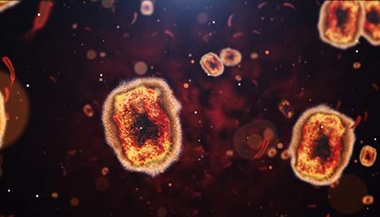Severe Acute Respiratory Syndrome (SARS)
What is SARS?
Severe acute respiratory syndrome (SARS) is a rapidly spreading, potentially fatal infectious viral disease.
According to the Centers for Disease Control and Prevention (CDC), SARS was recognized as a global threat in March 2003. The viral disease first appeared in Southern China in November, 2002 and spread to more than 24 countries in Asia, Europe, North America, and South America. There have not been any new cases of SARS since 2004, and the risk is relatively low.
Although they were dealing with a newly-discovered virus that behaved differently than other known viruses, world health officials were able to contain the SARS epidemic within a few short months. For another SARS outbreak to emerge, the SARS virus would need to be transmitted from an animal source, a lab accident, or humans who have not been rapidly diagnosed, isolated, and treated. China has reported a few cases of SARS since December 2003. Chinese health care professionals have heightened awareness of symptoms and are prepared to use proper infection control measures to prevent another outbreak.
What causes SARS?
A virus known as SARS-associated coronavirus (SARS-CoV) causes the illness. Coronaviruses commonly cause mild to moderate upper-respiratory illness in humans, but can cause respiratory, gastrointestinal, liver, and neurologic diseases in animals.
As researchers quickly rushed to stop the spread of SARS in 2003, they learned more about the characteristics of SARS-CoV, which had never been identified before. While they still have not confirmed the disease's origin, many believe SARS-CoV first occurred in animals and then spread to humans.
In children, the virus' incubation period from exposure to infection is 2 to 7 days, although infection has taken as long as 10 days in some cases. However, not everyone exposed to the disease becomes ill.
Scientists from around the world are collaborating to gain a better understanding of the cause of SARS.
What are the signs and symptoms of SARS?
SARS can be difficult to recognize in children because it mimics other respiratory diseases, such as influenza. It generally begins with a fever higher than 100.4° F (38° C) and progresses to include one or more of the following symptoms:
-
Headache
-
Overall feeling of discomfort
-
Body aches and chills
-
Sore throat
-
Cough
-
Pneumonia
-
Difficulty breathing
-
Shortness of breath
-
Hypoxia (insufficient oxygen in the blood)
-
Diarrhea (for 10 to 20 percent of patients)
There is currently no test to diagnose SARS. The symptoms of SARS may look like other medical conditions. Always consult your child's health care provider for a diagnosis.
How does SARS spread?
SARS-CoV spreads from one person to another mainly through close contact with someone who is infected with SARS. When a person with SARS coughs or sneezes without covering his or her mouth, respiratory droplets containing living virus can spray up to 3 feet and invade the mucous membranes of another person. People in close contact with someone with SARS are most at risk, which means they live or work with someone with SARS or have direct contact with the person through kissing, hugging, or sharing eating utensils.
The virus also can spread when a child touches an object with infectious droplets on it and then touches his or her mouth, nose, or eyes. It is not known whether SARS can spread more broadly through the air.
Research suggests that children with SARS are infectious only when they are having symptoms, such as fever or cough. They are most infectious during their second week of illness. As a precaution, the CDC recommends that people with SARS stay in isolation at home or in the hospital to keep others from getting sick. They should stay home from school for 10 days after their symptoms have gone away.
Some children have been exposed to SARS, but have not become ill or may not yet be ill. In 2003, health authorities in the U.S. and Canada recommended that exposed children have their temperature and health status monitored for 10 days. In addition, these individuals were asked to follow careful precautions to prevent spreading the virus, such as staying home, washing hands frequently, covering the mouth and nose when coughing or sneezing, and contacting a health care provider should symptoms appear.
What is the treatment for SARS?
Research is currently underway to develop an effective antiviral drug for SARS-CoV. Until then, people with SARS may receive mainly supportive therapy, with oxygen and fluids to help ease symptoms, and antibiotics to help prevent or treat secondary infections. Antibiotics do not, however, kill the SARS virus.
How can SARS be prevented?
Currently, no vaccine is available to prevent SARS. The CDC recommends taking the following steps with your children to prevent SARS. They should:
-
Wash their hands regularly with warm water and soap.
-
Avoid touching their eyes, nose, and mouth.
-
Use disposable tissues instead of their hands to cover their mouths when they cough, and throw tissues away immediately after use.
As parents, you should follow public health recommendations if you are in the area of an epidemic.
Experts from CDC and WHO rely on rapid diagnosis of SARS to prevent it from spreading and infecting additional people. Worldwide advisories help identify individuals at risk of developing SARS because of exposure to ill people. During the 2003 SARS outbreak, quarantines were used as a public health measure to stop the spread of SARS.
CDC and WHO continue to partner in a global effort to address SARS and prevent future outbreaks.
Always consult your child's health care provider for more information.




